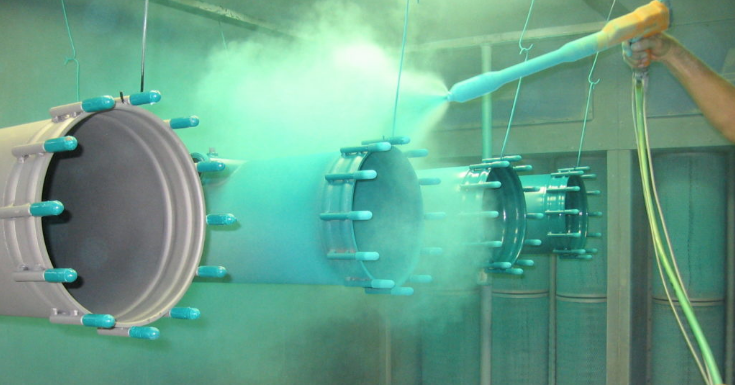
What is Powder Coating?
Powder coatings provide a layer of resilience and durability to materials that need protection from corrosion. A dry finishing process introduced in North America in the 1960s, it combines polymer resin with curatives, pigments, leveling agents, flow modifiers, and other additives. The ingredients are then melted, mixed, cooled, and ground into a powder resembling flour, and applied to the substrate in one of several different ways:
Applying Powder Coatings
Powder coatings are most typically applied using an electrostatic spray gun. When heated in a curing oven, they chemically react to produce long molecular chains that bind together, creating a durable finish that is extremely resistant to cracking, flaking, or peeling. Metal is the most typical substrate, but powder coatings can also be applied to plastics and medium-density fiberboard (MDF) using a slightly modified system.
Powder coatings can also be applied using a fluidized bed application. The parts to be coated are preheated in a container of fluidizing powder until the coating melts and flows over the part. Depending on the type of powder used, and the mass and temperature of the part, a curing process may or may not be necessary.
Whether powder coatings are applied using the electrostatic spray gun or a fluidized bed process, they are durable, cost-effective, and environmentally friendly.
Why Powder Coatings?
Powder coating provides a far more durable finish than liquid paint. Found on everything from the most sophisticated industrial machines to everyday household appliances, they provide superior resistance to impact, moisture, chemicals, ultraviolet light, and extreme weather conditions. Manufacturers rely on powder coatings to reduce the risk of scratches, chipping, abrasions, corrosion, fading, and other wear issues.
Due to their superior protection and outstanding durability, powder coatings now have more than 15 percent of the total industrial finishing market share—and for good reason: they look great, perform even better, and offer a variety of benefits to the environment.
